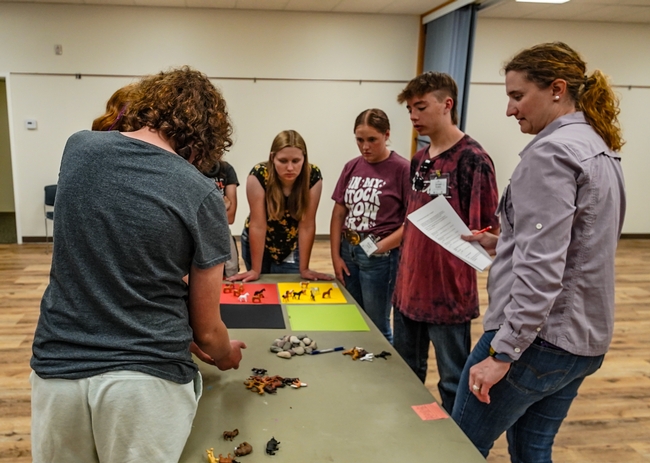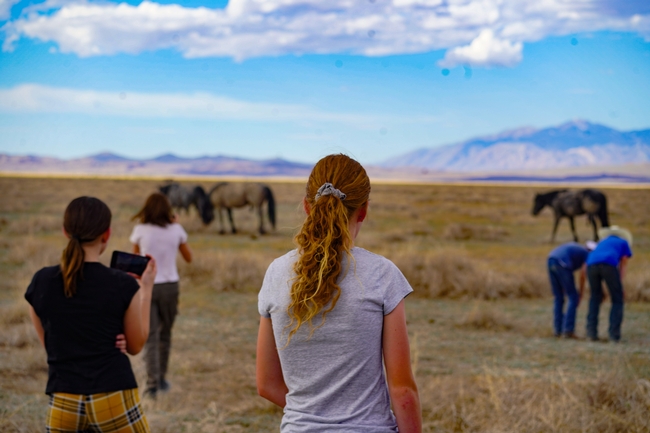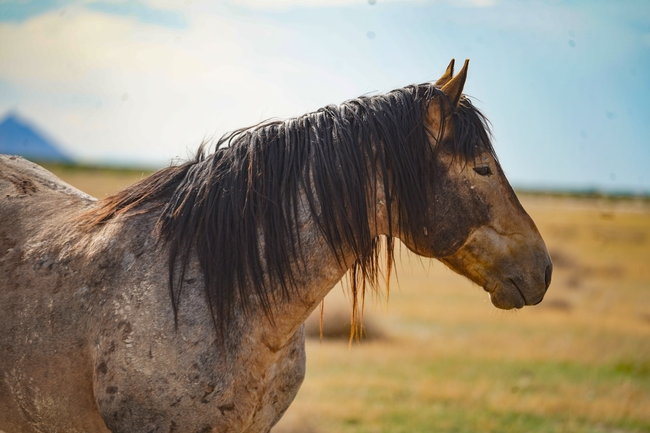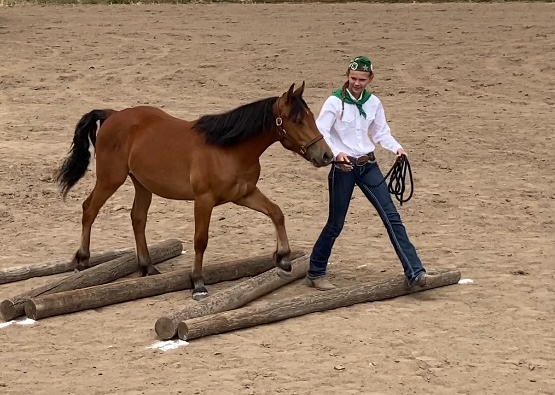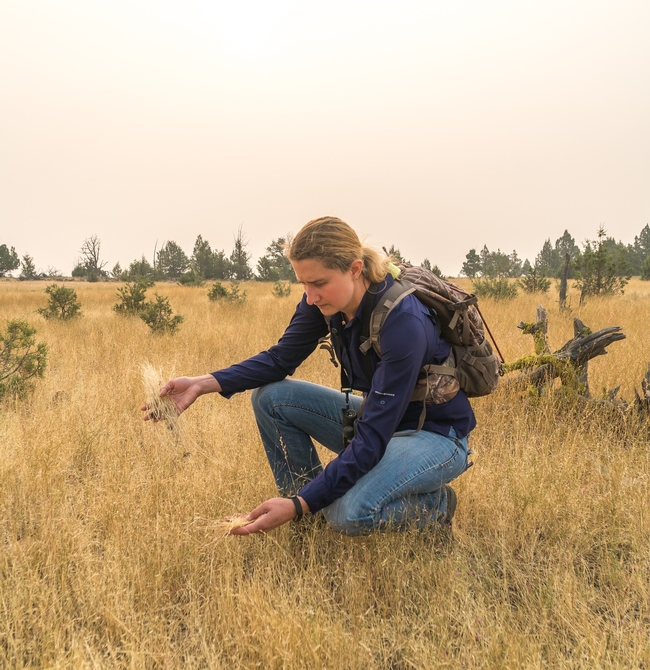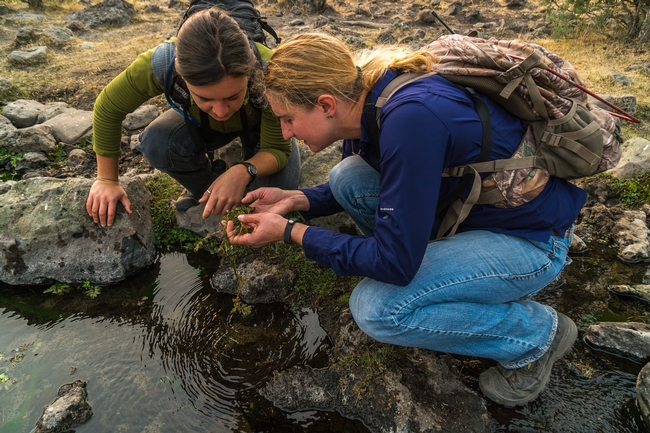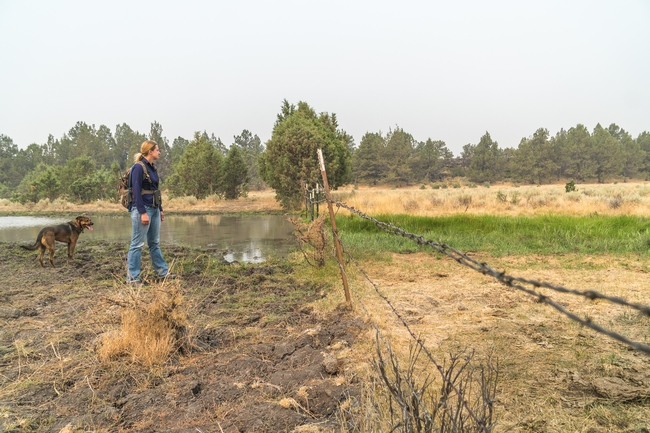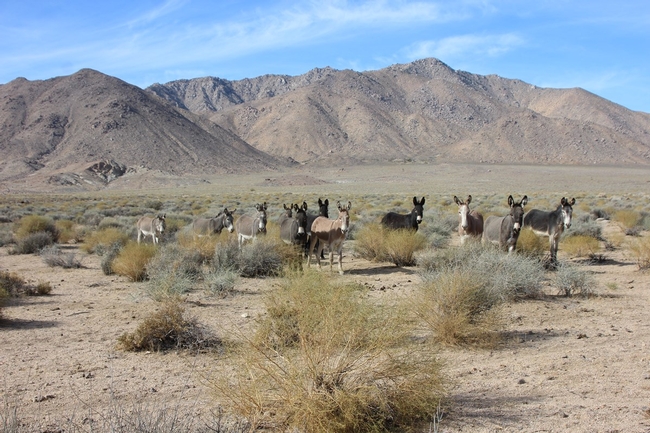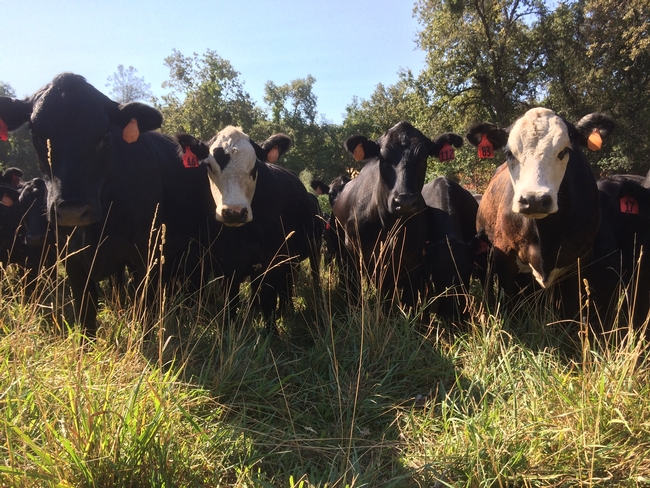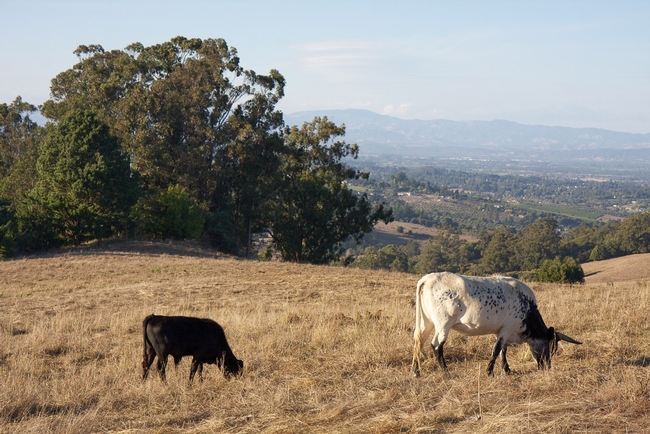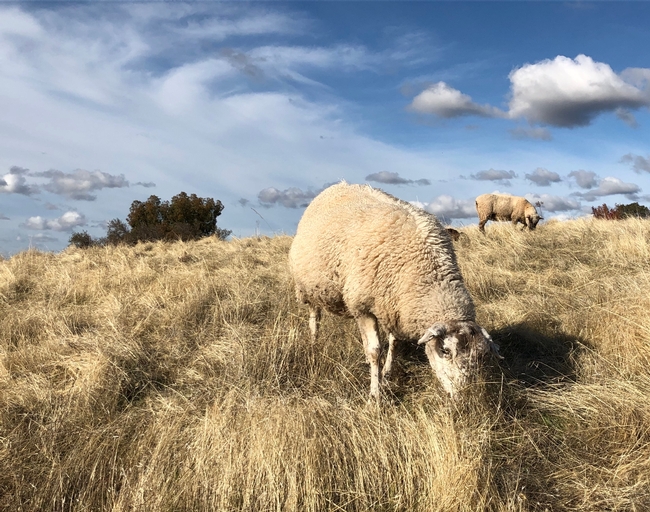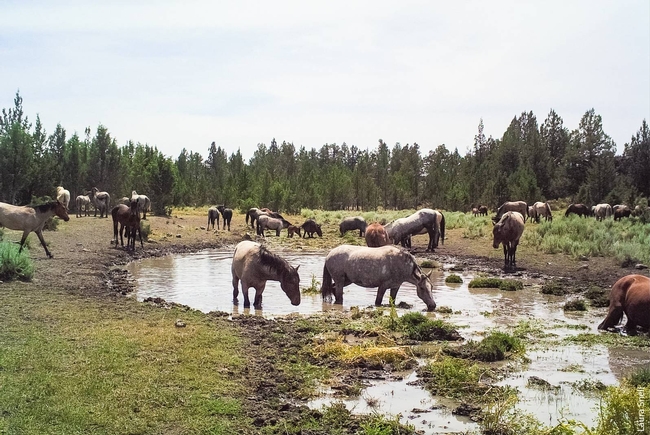Posts Tagged: Laura Snell
Youth invited to Mustang Camp in Lassen County June 28-29
UC Cooperative Extension in Modoc County is partnering with Utah State University to offer a mustang camp for California youth ages 9 to 19.
The 4-H Mustang Camp, sponsored by the U.S. Bureau of Land Management, will be held on June 28-29.
This overnight camp is an opportunity for youth across California to learn about managing public lands, rangelands, wild horses and burros. Mustangs are feral horses that roam freely.
“We realize not everyone can take a wild horse home so we'll take the young people out on the range,” said event organizer Laura Snell, UC Cooperative Extension livestock and natural resources advisor for Modoc County.
“Participants will learn about range management, the grasses, habitat, ecosystem and wild horses,” she said.
Youth also will learn about careers with U.S. Bureau of Land Management and the U.S. Forest Service related to wild horse management.
Camp participants will spend the night at a campground and use facilities at the Lassen County Fair Grounds. Registration for the mustang camp is $75 and includes lunch and dinner on June 28 and breakfast and lunch on June 29. Space is limited to 25 youth.
“Our hope is that by participating in this camp these young people will leave understanding and appreciating the uniqueness of our wild horses and burros,” said Snell.
The 4-H Mustang Camp is sponsored by the BLM Wild Horse and Burro Program and UC Cooperative Extension in Modoc and Lassen counties. It will be held at Lassen County Fair Grounds at 195 Russell Avenue, Susanville, CA 96130.
Registration for camp is open through June 14. To learn more about the camp or to register, visit https://extension.usu.edu/utah4h/events/mustang-camp.
Colt Challenge on June 22
The public is invited to celebrate the five-year anniversary of the Devils Garden Colt Challenge on June 22 in Alturas in Modoc County. In the Colt Challenge, 4-H and FFA youth in California and in the Oregon border counties of Lake and Klamath take home young, wild horses in December to train, then gather in June to show their horses' progress. Attendance is free.
For more information about the Colt Challenge, visit https://www.devilsgardenucce.org/post/colt-challenge-faq.
UCCE director finds place among women leaders of Modoc County
When Laura Snell first came to the far northeastern corner of California, she was amazed to find that the Board of Supervisors in Modoc County – where cows outnumber people by a ratio of 13 to 1 – was composed almost entirely of women.
Snell, who arrived in the high desert town of Alturas in 2015 as the University of California Cooperative Extension livestock and natural resources advisor, said she now has a theory as to why.
“It's a great example of the rural and agricultural lifestyle we have here where women get involved in everything from civic organizations to local government,” she said. “In a lot of ways, there isn't a glass ceiling in an area where everyone is needed and most people are wearing multiple hats to keep the community going.”
Snell has worn the “county director” hat for UCCE in Modoc County since 2017, bringing a range of UC Agriculture and Natural Resources programs to local communities. In the subsequent years, she has established herself as one of the region's most prominent and respected voices.
“Laura is a strong leader, an excellent communicator, and extremely knowledgeable in the fields of wild horses, groundwater, livestock and grazing – among many other topics,” said Geri Byrne, vice chair of Modoc County's Board of Supervisors (which is presently 75% female).
Snell's broad base of knowledge – as well as her bachelor's in water science and master's in agronomy, both from the University of Nebraska – have served her well in her dream job in a “one-advisor” county.
“This is what I always wanted to do – know a little bit about a lot of things and be the person who connected people with what they needed, connecting them with information, connecting them with different experts,” Snell explained.
One of her most recent accomplishments is launching UC Master Food Preserver classes in Modoc County this year. About 130 people – in a county of 9,000 – have been served by this UC ANR program, and four are on the cusp of graduating as Modoc's inaugural class of certified Master Food Preservers. The vast majority of program participants, Snell notes, have been women.
“They're not only preserving for their own families; they're also using these tools and harvesting things from their gardens and then having a value-added product to sell at the farmers market and our local food hub,” said Snell, citing one participant who learned how to make and sell celery salt.
The contributions of women to the local economy, county leadership and organizations such as the Modoc County Cattlewomen's group continue to inspire Snell in her work – and in nurturing the next generation of leaders.
An avid participant in 4-H growing up in Story County, Iowa, Snell said one of the most fulfilling aspects of her job is mentoring the interns who come through her office, and presenting them with opportunities to learn and grow in their careers.
It was a personal connection that brought Snell to Modoc. A former Bureau of Land Management director in the county, who happened to be the father of her college friend, encouraged Snell to apply for the advisor position. So she flew from Nebraska to Reno and then made the three-hour drive north for the interview.
“I loved it; I immediately loved it,” Snell recalled. “I called my parents that night and said, ‘If they offer me this job, I'm staying.' This is it – this is what I've always really wanted to do, but not only that: this is the kind of community I've always wanted to live in.”
Snell – along with her canine companion, an Airedale-German Shepherd-Rottweiler mix named Zuri – have become an essential part of the fabric of Modoc County. She has provided guidance on everything from managing wild horses on the Devil's Garden Plateau to optimizing agritourism operations for greater profitability to improving the livelihoods of farmers and ranchers by alleviating regulatory burdens.
“Working in this county and for this county, for the people here, that's what fills my cup,” she said. “That's what is most satisfying about this work.”
And the county, in turn, has been appreciative of Snell's wide-ranging expertise and unflappable demeanor. According to Supervisor Byrne, Snell has been instrumental in taking on complex issues such as wild horses and the Big Valley Groundwater Sustainability Plan – four years in the making and greatly enhanced by Snell's background in water and her passion for bringing science to the people.
“Laura has a ready smile and manages to stay calm in the face of adversity,” Byrne said. “Modoc is very blessed to have such an articulate, knowledgeable, hard-working and personable director.”
Non-native wild burros cause natural resource damage
The National Park Service has contracted with Peaceful Valley Donkey Rescue to humanely remove 2,500 to 4,000 burros in Death Valley National Park, a particularly challenging effort because the Bureau of Land Management, which manages adjoining land, does not consider the non-native equines a problem, reported Miranda Willson in the Las Vegas Sun.
The rescue organization rounds up the burros and puts them up for adoption.
Experts say the burros damage vegetation near the park's desert springs, which support rare and endemic fish, plants, invertebrates and insects. They also compete with native grass-eating mammals — like endangered desert bighorn sheep — for food and access to increasingly rare watering holes, according to Laura Snell, livestock and natural resources adviser at the University of California Cooperative Extension.
“We've seen quite a bit of competition at watering holes throughout Nevada and northeast California,” Snell said. “All of those animals need water, and there's maybe only one watering hole available year-round.”
Executive director of Peaceful Valley Donkey Rescue Mark Meyers said wild burros are a part of American history that people can experience and preserve by adopting them.
“We used them for the Spanish Trail, we used them for Catholic mission systems, we used them for the railroad, we used them for mining. We used them for all these capacities, and then we said, ‘We don't need them anymore,' ” Meyers says. “These animals built our country, yet they're the ones that aren't supposed to be here.”
Livestock grazing helps California tackle wildfire
California is searching for solutions to the wildfire crisis. Livestock ranchers believe they can help.
At the 14th Annual Rangeland Summit in Stockton in January, more than 150 ranchers, public land managers and representatives of non-profit organizations that work on land conservation gathered to share research and experiences that outline the value of cattle and sheep grazing on rangeland.
Since California was settled by Europeans, cattle and sheep have been an integral part of the state's history.
“Cattle can control brush,” said Lynn Huntsinger, UC Cooperative Extension specialist at UC Berkeley in a presentation on brush management. She discussed research she conducted in the early 1980s to understand the role of cattle in Sierra Nevada brush control.
“We need to make livestock into firefighters,” she said. “Constant, deliberate, targeted grazing is needed for fire management.”
However, thick, overgrown brush requires intensive treatment that cattle can't handle on their own.
“You have to start from a good place,” Huntsinger said. “Start early, such as post fire. Plan when you have a blank slate for the forest you want.”
The tragic loss of homes and lives to wildfire in the last few years has increased the public demand for answers and action. However, the reasons for greater frequency and intensity of wildfire are not well understood.
“Is it climate change? Past decisions? Land use? What can we do about it?” asked UC Cooperative Extension specialist Van Butsic. “Research.”
At the summit, Butsic presented the results of his recent research to determine whether ownership has an impact upon whether land will burn. He and his colleagues studied the burn histories of forest and rangeland areas that were matched with the same characteristics, except in ownership.
“We controlled for all factors – slope, elevation, the likelihood of ignition,” he said. “We found that on forest and rangeland, federal ownership led to .3 percent higher fire probability. Ownership is dwarfing the impact of climate change.”
There is still much more research to be done.
“We can't say the impact of grazed vs. ungrazed land,” Butsic said. “We also need to look at fire severity as well as fire frequency.”
The UC Cooperative Extension advisor in Modoc County, Laura Snell, shared preliminary results at the rangeland summit that provide information for landowners making decisions about returning livestock to burned areas.
She and a team of colleagues studied the fire history of U.S. Forest Service and Bureau of Land Management rangeland in Lassen and Modoc counties where fires had burned through 5, 10 and 15 years before. The dataset included information about whether the land was “rested” for two years after the fire, or whether livestock were returned to graze soon after the blaze.
The scientists set out to determine whether fire intensity and climate at the site (measured by soil temperature and moisture) had an impact on the future diversity of plant species and growth of cheat grass, an invasive species that animals don't like.
“No matter what we did, graze or not graze, after 15 years, the species richness stayed the same,” Snell said. “Grazing was not the driving factor.”
The results are also important in terms of fuels accumulation and the prevention of future wildfires.
“Federal land managers have typically used a policy to rest the land for two years after a fire. During the interval, the fuels sometimes burn again and livestock producers have to wait another two years,” Snell said. “Our research showed you don't necessarily need to rest the land after the fire.”
Two ranchers who were recently impacted by wildfire presented their experiences and perspectives during the rangeland summit.
Mike Williams of Diamond W Cattle Company had livestock on 6,500 acres of leased land in Ventura County when the Thomas Fire ignited on Dec. 4, 2017. Over more than a month, the fire burned 281,893 acres and consumed 1,000 structures.
Williams had stockpiled feed on certain pastures by limiting grazing, which during the fire turned into hazardous fuel.
Adam Cline, rangeland manager for the Yocha Dehe Wintun Nation Preserve in the Capay Valley, had a similar experience when the County Fire burned more than 90,000 acres in western Yolo and eastern Napa counties in June and July 2018. To reserve feed for later, Cline had left 2,500 pounds per acre of residual dry matter on grazing land as a drought mitigation strategy. He said he plans to reconsider this grazing plan.
“Now, cattle feed looks like a lot of fuel,” he said.
Federal officials are reducing the wild horse herd in Modoc County
Officials with the Modoc National Forest are rounding up 1,000 wild horses on federal lands and putting them up for sale and adoption, reported Christina Maxouris and Brandon Griggs on CNN.com
About 4,000 wild horses live on Devil's Garden Plateau, a protected territory inside Modoc National Forest near the Oregon border. It's home to the largest herd of wild horses in the country managed by the U.S. Forest Service.
"With a population growth rate of 20-25 percent, 800-1,000 wild horses will be born on the Devil's Garden this year, making these small removals negligible," said Laura Snell, UC Cooperative Extension advisor in Modoc County.
Snell's research on wild horses at Devil's Garden was chronicled in California Agriculture journal by executive editor Jim Downing. The federal government has determined the ideal horse population on the 230,000 acres of wild horse territory is no more than 402, however, more than 4,000 wild horses are running on the land.
The current federal horse gathering was prescribed by the 2013 Devil's Garden Plateau Wild Horse Territory Management Plan to help address impacts on aquatic resources, wildlife, grazing and traditional cultural practices. Reducing the population will allow range and riparian ecological conditions to recover, while also supporting wild horse herd health by reducing competition for limited food, water and habitat, according to a Modoc National Forest press release.
Most gathered horses are expected to be under 10 years old and will be available for adoption at the BLM Litchfield Corrals. Gathered horses 10 and older will be cared for at the new Double Devil Wild Horse Corrals on the Modoc National Forest and offered for adoption and sale. To adopt a young horse, see https://www.blm.gov/adoptahorse/ or wildhorse@blm.gov. To adopt or purchase an older horse go to https://go.usa.gov/xQ3r3.

